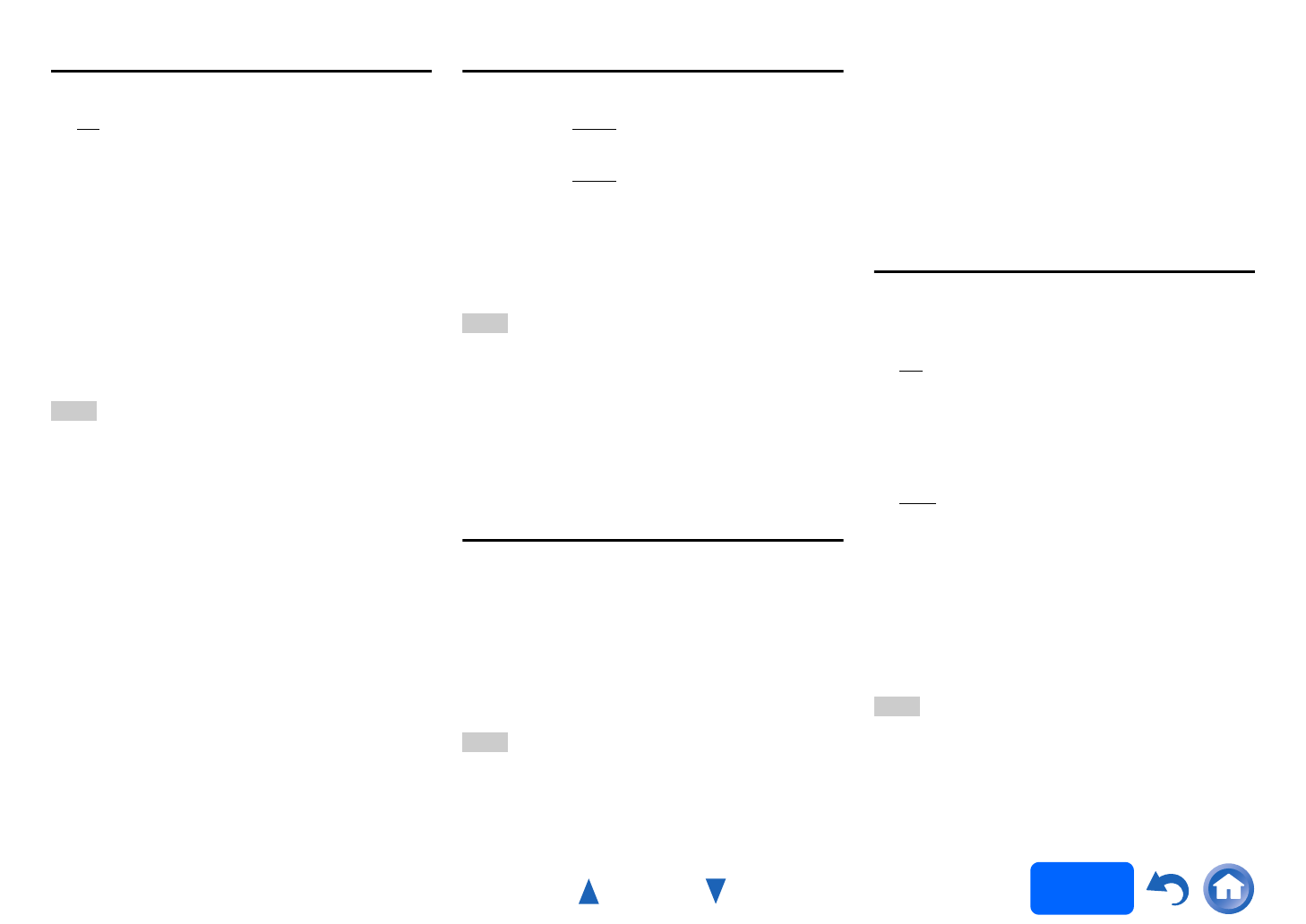
Advanced Operations
En-59
Operating
procedure
(➔ page 57)
Phase Matching Bass
■ Phase Matching Bass
`Off
`On
From the warm low notes produced by a cello to the
deep frequencies of electronic music, a good audio
system should be able to deliver plenty of bass
resonance.
While traditional enhancement systems effectively
boost low-frequency sound, they are often prone to
the effects of phase shifting, which can overwhelm
mid-range frequencies and muddy the sound. Our
Phase-Matching Bass Boost technology effectively
preserves mid-range clarity-allowing vocals and
strings to shine-while maintaining a smooth, powerful
bass response at all volume levels.
Note
• The Phase Matching Bass is disabled when the Direct,
Pure Audio, or THX listening mode is selected.
• If the “Subwoofer” setting is set to “No”, this setting is fixed
to “Off”.
• When “Sound Program” is enabled, this setting cannot be
used if the “Subwoofer” setting is set to “No” in “Sound
Program Edit” (➔ page 71).
Operating on the AV receiver
Speaker Levels
■ Subwoofer Level
`–15.0dB to 0.0dB
to +12.0dB in 0.5 dB steps.
■ Center Level
`–12.0dB to 0.0dB to +12.0dB in 0.5 dB steps.
You can adjust the volume of each speaker while
listening to an input source.
These temporary adjustments are cancelled when the
AV receiver is set to standby. To save the setting you
made here, go to “Level Calibration” (➔ page 66)
before setting the AV receiver to standby.
Note
• You cannot use these function while the AV receiver is
muted.
• These settings cannot be used while a pair of headphones
is connected.
• Speakers that are set to “No” or “None” in
“Speaker Configuration” (➔ page 65) cannot be adjusted.
• When “Sound Program” is enabled, “Subwoofer Level”
cannot be used if the “Subwoofer” setting is set to “No” in
“Sound Program Edit” (➔ page 71).
Audyssey
®
■ Audyssey
See “Audyssey” in “4. Source Setup” (➔ page 71).
■ Dynamic EQ
See “Dynamic EQ” in “4. Source Setup” (➔ page 72).
■ Dynamic Volume
See “Dynamic Volume” in “4. Source Setup”
(➔ page 72).
Note
• These technologies can be used when all the following
conditions are met:
–Room Correction and Speaker Setup is completed. Note
that “Audyssey” requires the “Audyssey MultEQ XT32
Full Calibration” method.
–Any listening mode other than Direct or Pure Audio is
selected.
–A pair of headphones is not connected.
• The setting is stored individually for each input selector.
•“Dynamic EQ” and “Dynamic Volume” cannot be selected
when any of the THX listening modes is selected, with
“Loudness Plus” set to “On” or “Preserve THX Settings”
set to “Yes” (➔ pages 67, 68).
• When “Sound Program” is enabled, the setting must be
made with “Sound Program Edit” (➔ page 71).
Late Night
■ Late Night
For Dolby Digital and Dolby Digital Plus sources,
the options are:
`Off
`Low:
Small reduction in dynamic range.
`High:
Large reduction in dynamic range.
For Dolby TrueHD sources, the options are:
`Auto
:
The Late Night function is set to “On” or “Off”
automatically.
`Off
`On
Turn this setting on to reduce the dynamic range of
Dolby Digital material so that you can still hear quiet
parts even when listening at low volume levels—ideal
for watching movies late at night when you don’t want
to disturb anyone.
Note
• The effect of the Late Night function depends on the
material that you are playing and the intention of the original
sound designer, and with some material there will be little
or no effect when you select the different options.
• The Late Night function can be used only when the input
source is Dolby Digital, Dolby Digital Plus, or Dolby
TrueHD.
1
Press TONE repeatedly to select “Phase
Matching Bass”.
2
Use – and + to change the setting.


















